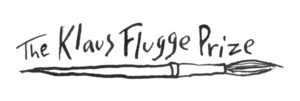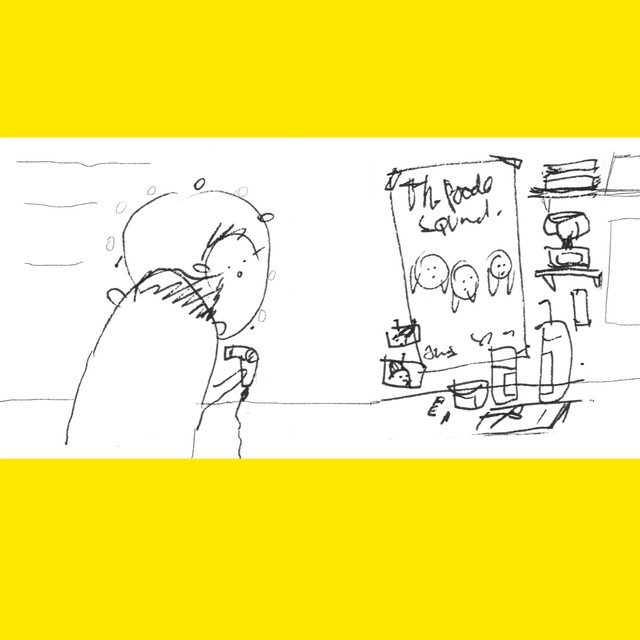

Pierre’s New Hair, by Joseph Namara Hollis
Pierre’s New Hair by Joseph Namara Hollis is one of the six books on the shortlist for the 2022 Klaus Flugge Prize.
The judges loved the anarchy Joseph brings to the story and the details included.
Former Klaus Flugge Prize judge, Senior Lecturer in Education: Primary English and Children's Literature, Mat Tobin interviewed Joseph about his book.
Mat: Pierre’s New Hair is dedicated to ‘everyone chasing their dreams’. This is central to Pierre’s own journey too and I wondered what your own dreams were as a child and whether creating a picturebook was part of that dream.
Joseph: As a child I loved drawing. I also loved storytelling, but this was mostly a private, internal activity. I adored the worlds Richard Scarry created which allow people to imagine their own stories within the pictures.
The picture book became an increasingly enticing stage for the imagination because of the vast potential to play with words and pictures. There’s something special about the book format, the worlds within can be folded away and hidden or shared and enjoyed together.
It wasn’t until my early twenties that my dream to make picture books became clearer, before that I was fairly sure that I wanted to ‘be an artist’ or a ninja.
Mat: You have a beautiful website that celebrates both your style and creative sense of adventure. Part of your journey into illustration and design led you to complete an MA in Children's Book Illustration at Cambridge School of Art. Can you tell us a little about some of the modules you took there and the lecturers who had an impact on your work?
Joseph: Cambridge School of Art is a wonderful place. My investigation into making books had been somewhat isolating until starting the MA in the Children’s Book Illustration. To celebrate the thing that you love most with other like-minded people from around the world creates tremendous momentum. It was liberating, joyful and a challenging experience.
First you learn to see through observational drawing, then the exploration of sequence begins, and finally the amalgamation of words and pictures.
There is a long list of incredible lecturers (and technicians) situated there or visiting who helped transform my process and sense of self. It was a life changing experience. Helen Merrin, a former foundation tutor of mine nudged me in their direction.
Mat: One of the elements that I love about Pierre’s New Hair is the frenetic energy that both comes in the movement of the characters and in the pace and form. I mean, this is a cast on rollerskates! Can you share a little about how you worked on managing narrative pace?
Joseph: It was a long and challenging process wrestling with the sequence across dummy books, storyboards, and sketchbooks. The sequence had many former forms. I suspect the story would go on transforming endlessly until someone (hopefully, a publisher who’s offered you a contract) says “that’s enough”. There was insight from many people along the way, tutors, kind editors from other publishers, friends from Cambridge School of Art and my agent Hannah.
It was most fun in the very beginning, and at the end. In the beginning you have utter playful freedom, and at the end you have the confidence of your editor. By the time I was working with the editors at Tate it seemed relatively painless and straight forward. Big thanks to Fay and Emilia at Tate Publishing for making it such a positive experience.
Mat: Pierre’s New Hair originally begun as ‘Bear’s New Hair’. I wondered if the change came when working with the editing at design team at Tate and what other changes were made from the first dummy book to the completed piece? How did working with Emilia and Jade affect your thinking and work?
Joseph: The change in title did happen when I began working with Tate, it was to avoid confusion with a different book by Alex Willmore (The Big Trip). I didn’t think it would impact the story, but once Bear became Pierre, it began to inform his character (a little)! He became an individual, a unique personality. Emilia’s and Fay’s impact was probably more significant than the change in name. Their confidence in my vision allowed Pierre’s character to blossom.
Mat: In your fantastic video for the Klaus Flugge Prize, you share a lot about the origin of Pierre and how you work. I love the fact that you work sequentially and that ideas seem to grow organically. Can you share with us a couple of pages from your sketchbooks and talk us through a ‘lightbulb’ moment in which an idea for the book really shone?
Joseph: The most significant moment that springs to mind was the change in writing from third person to first person. I believe this makes Pierre’s experience more relatable and allows more of his personality to shine. I was studying a stack of picture books for inspiration, and it clicked after reading Superkitty by Hannah Whitty (who coincidentally is my agent), it is illustrated by Paula Bowles.
Mat: In terms of getting the narrative in place within the picture book, were there any hurdles that proved a real challenge? Can you talk us through what the problem was and how you overcame it?
Joseph: You could say it was wrestling with the pace. But perhaps the biggest challenge is overcoming the emotional component of feeling a sequence isn’t right, therefore it is wrong. Therefore ‘you have failed’. And as an extension of that ‘you are a failure!’ In hindsight, all those ‘failures’ are important parts of the working process and precious parts of the learning process. I often read about the creative process, and this has helped me overcome those issues at various stages. Elizbeth Gilbert’s Big Magic was one I dipped into along the way. Mihaly Csikszentmihalyi’s books on Flow Theory have been pivotal. If in doubt, return to the process you love.
Mat: Can I be cheeky and ask you to give us a tour of your workspace? It’d be great to see some of the materials that you work with or spaces that are important to you.
Joseph: I love seeing other people’s workspace but unfortunately, I’m moving house this week! I’ve found an old picture, It’s not great. The three components I need in a workspace consist of a digital space (including a big monitor, Wacom drawing tablet, A3 Scanner, and computer that’ll allow me to ‘paint’ seamlessly in Photoshop), a desk for messy work where I’ll draw with ink, use a lightbox, experiment making marks and fill the floor with scraps of paper, and a large bookshelf to keep me topped up on inspiration.
Mat: I am always fascinated by seeing an illustrator talk us through the process of bringing a page in their book to life. Can you talk us through a favourite spread of yours and guide us through it from the initial sketch and layout to the finished piece?
Joseph: This is one of my favourite scenes from the book. The items in Pierre’s room all help to reveal his character. In the end it was a single page in the published book, but initially it was a double page spread used to sell the story at the Bologna book fair.
You can see the initial thumbnails, they are naive, often when the idea is conceived in thumbnails, they’re barely legible but I admire their energy.
From the initial thumbnail I’ll construct a rough layout to scale to make sure the drawing will fit the page dimensions, I use this rough sketch on the lightbox to guide me.
Then I’ll draw with dip pen and ink focusing on the outlines. If something doesn’t go to plan, I’ll just whip out a new piece of paper to amend that area or make an alternative image which I can insert digitally later. This gives me a sense of a freedom and allows me to flow. Keep drawing until the wheels fall off.
Finally, after a rest and some more sensible reflection and criticism, I’ll ‘colour-in’ on the computer. Often in Photoshop. Sometimes in Procreate. I mimic the colour separation process that’s usually used for risograph or a process like screen printing, this limits my colour palette and prevents me from getting overwhelmed by endless colours available. It also helps maintain an element of surprise which keeps the process entertaining.
Trying to produce the little details (hair products and posters) was exhausting. I drew them in a hurry without thinking too much because it was very easy to become cramped and stagnant If I had enough time to consciously try to be ‘funny’. Capturing Pierre’s sense of humour was more so the motivation than telling a joke. Thinking can be your worse enemy sometimes, it’s far better to ‘think’ with your hands. Make! Keep making!
Mat: Are there any contemporary artists/illustrators whose work you admire so much that you think everyone should encounter them?
Joseph: Absolutely, a gigantic list but here are just a few who inspire me and regularly help with my process; my wife – Julia Moscardo. And dear friends Beatriz Lostale, Marina Ruiz and Helen Merrin.
Mat: Can you share a little with us about the stories you’re currently working on and what we can look forward to reading in the future
Joseph: I’ve been nurturing a story called ‘Not in the Mood’ inspired by my distaste for situations in which you’re forced to dance to music you do not like, when you just aren’t in the mood. Recently, I’ve been more absorbed in raising my first child (and lecturing), I intend to put that story to rest and let my baby daughter inspire some new ideas, allowing the drawing to lead the way.
Pierre’s New Hair is published by Tate, 978-1849767712, £6.99 pbk.

The Klaus Flugge Prize is funded personally by Klaus Flugge and run independently of Andersen Press.
Website maintenance & Copyright © 2024 Andersen Press. All Rights Reserved. Privacy & Cookie Policy.













